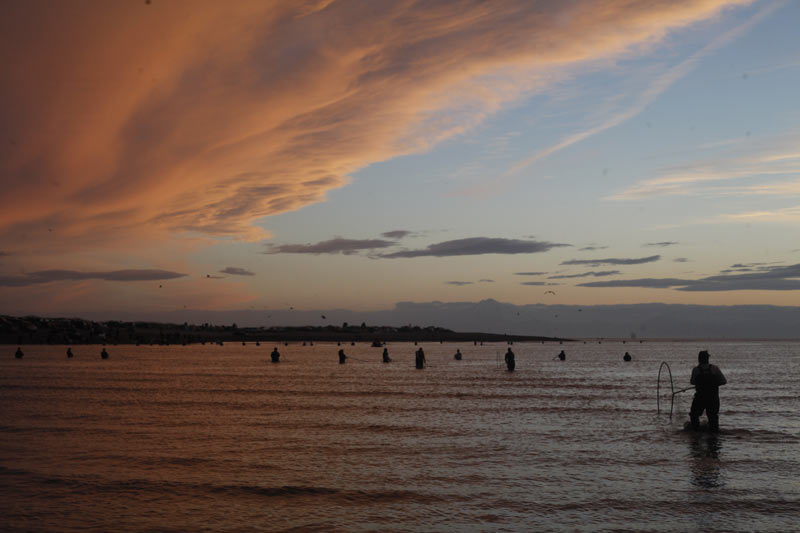Kasilof, a town of roughly 500 people, is a hub of outdoor activity.
In summer, fishermen float in drift boats or line the banks of the Kasilof River in hope of catching one of several species of salmon that return annually, including mighty early run of chinook salmon in late May and early June, more than a million sockeye in July, and a healthy run of silvers in August.
Common sport fishing access points include the Kasilof River State Recreation Area and the Crooked Creek State Recreation Area.
The natural salmon run is essential not only to recreational fishers, but also to Kasilof’s commercial fishing industry. While driving from Kenai along Kalifornsky Beach Road, notice the salmon harvesting locations marked by fluorescent orange buoys floating in Cook Inlet.
Kasilof beach, located at the end of North Cohoe Loop Road, offers an even better glimpse into the commercial fishing industry, as shoreline “setnetters” can be seen pulling up their nets and picking out the fish before they are iced and shipped to restaurants and dinner tables all over the United States.
Salmon aren’t the only fish in town.
For anglers that like wetting a hook on quieter water, several local lakes offer exceptional trout fishing. Most popular among these are Tustumena Lake, the peninsula’s largest lake, and Johnson Lake in the Johnson Lake State Recreation Area.
Johnson Lake also offers superb canoeing opportunities and has numerous campsites and picnic locations along the shore. Ducks, loons, moose and bears are quite common around Kasilof, and lynx, while rare, are also occasionally spotted by those with keen eyes.
As fishing comes to an end in winter, dog-sledding replaces it as the outdoor activity of choice. Several professional mushers train their teams on Kasilof’s trails, including Dean Osmar, the 1984 Iditarod champion, and his son Tim Osmar, the 2001 champ of the 1,000-mile Yukon Quest. These trails are also home to the Tustumena 200 Sled Dog Race, as well as an entry point for snowmachiners into heading into the Caribou Hills trail region of the lower Kenai Peninsula.
For history buffs, the Kasilof Regional Historical Association’s McLane Center Museum is a must-see. It offers a glimpse into the past with Native and homesteader artifacts and restored cabins once used by trappers and fox farmers.

